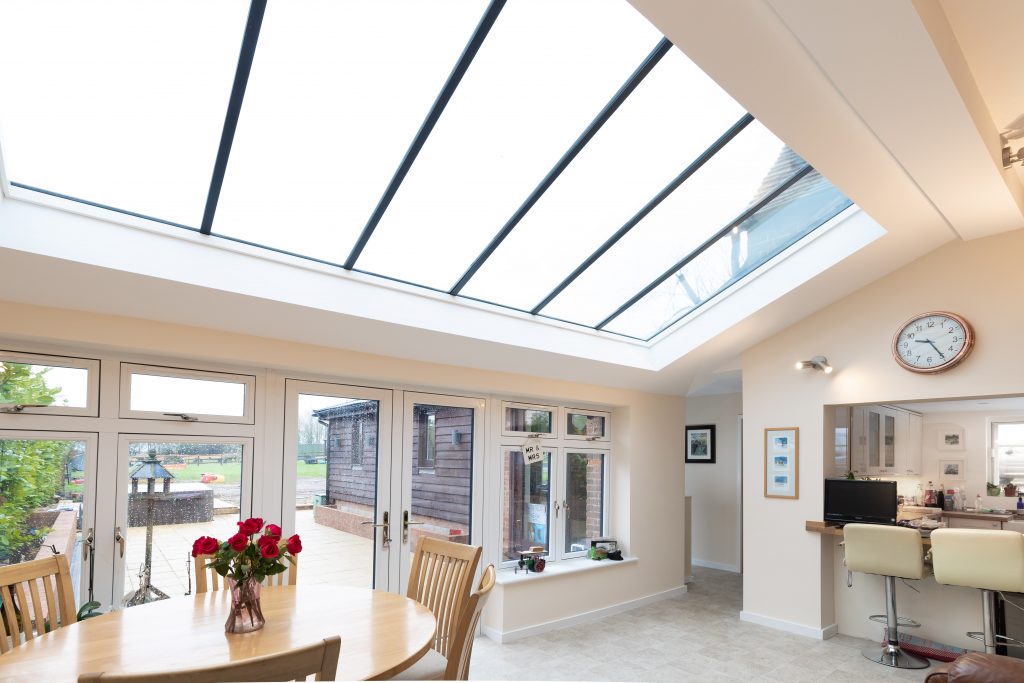Paul Trace of Stella Rooflight discusses the importance of maintaining the historical integrity of buildings during an economic downturn.
It’s hard to imagine a tougher economic climate. Having emerged from the pandemic, businesses and homeowners are beset by the rising costs of fuel and materials, economic shockwaves from the war in Ukraine and stark warnings of 11% inflation from the Bank of England. This is compounded by ongoing building supply issues that are still being experienced as a result of Brexit.
As the cost of most building materials such as timber, steel and glass continues to increase, the impact will most keenly be felt among those working on self-build, renovation and extension projects. No doubt, this perfect storm of economic woe has resulted in the postponement of many such project, however, for those that are pressing on, most will be looking to cut back on budgets in whatever way they can and compromises on quality are inevitable.
Fortunately, when it comes to the majority of building projects, especially new build or modern homes, there is plenty of choice out there for most materials and components, and shopping around a little can yield useful savings. However, if your project is historically sensitive, for example a Listed building, barn conversion or a property in a conservation area, then choices may be more limited.
There are many examples of imitation ‘conservation’ products on the market, for example plastic being used as a replacement for cast iron rainwater goods, windows and rooflights. While these products might offer a cheaper alternative, there are few, if any examples where these materials should be considered appropriate.
According to Historic England, the public body that looks after England’s historic environment, in their Materials for Historic Building Repairs article[1] “The use of authentic traditional materials helps to retain the character of historic buildings and in turn supports traditional industries and vital craft skills. They argue that “some materials can actually harm the existing historic fabric and speed up deterioration”, and urge for consideration to be given to “the potential durability of the material used and its future maintenance requirements”, they conclude in saying “what might seem like the cheapest option might not always work out so in the long run”.
Looking more closely at the rooflight market; just because something is sold as a conservation product, that doesn’t automatically make it suitable for all building types. If a rooflight is going to be introduced it has to meet the conservation specifications of that particular area or type of building. If your building is Listed or in a conservation area then the criteria for using conservation rooflights are much stricter and you should always gain approval, not only for their use but also the manufacturer that you would want to use.
There are only a handful of companies that specifically make conservation rooflights and even fewer who design, manufacture and assemble in the UK. Many conservation rooflights available online are simply other products which have been spruced up to look like they meet the requirements of that type of product. There are many elements which go into a genuine conservation design and price is always a reflection on quality.
If a conservation rooflight is all frame, then there is little point in having one. Genuine conservation designs should be manufactured with slim, clean lines and a low-profile to match the roofline. A number of skylight companies try to produce conservation rooflights using modern bulky aluminium or plastic profiles, which sit proud of the roofline, particularly slate. It is widely accepted that most authentic conservation rooflights are manufactured from steel because it provides great strength while offering a slim profile and excellent glass to frame ratios. There are many types of steel conservation rooflights and for unrivalled protection and lifespan, one should always consider 316 stainless steel, which will protect against the common issue of rust.
Consideration should also be given to the viewable area of a rooflight. Large rooflights do not always guarantee lots of light and you should always check what the finished viewable (often referred to as clear viewable) area of the rooflight will be. You might think that a conservation rooflight with a whole frame size of 900mm (w) x 1200mm (h) would have a similar clear viewable area regardless of the manufacturer, but you would be wrong and bulky framed modern types or the flat rooflights posing as pitched conservation styles will let in considerably less light than a genuine steel framed version.
Understanding what constitutes a genuine conservation product is vitally important in an age where we are witnessing far too many cheaper, often imported, plastic products, being used in sensitive buildings across the UK. The use of such products very rarely contributes anything to historic character of a building, indeed the visual impact of using modern materials on older buildings usually has quite the opposite effect.
While there is no denying that bone fide conservation products are more expensive – and hopefully the reasons for this have been demonstrated above – builders, architects and homeowners must resist the temptation to use alternative materials when looking at areas in which to cut back on budgets. As we continue to feel the economic squeeze we can only hope that decisions are taken in the best interests of the long term preservation of our heritage and that cost cutting does not end up having a long term impact on our important historical buildings.
For further information or to discuss your conservation rooflight requirement contact the Stella Rooflight team on 01794 745445 or email info@stellarooflight.co.uk
[1] https://historicengland.org.uk/advice/technical-advice/buildings/building-materials-for-historic-buildings/







